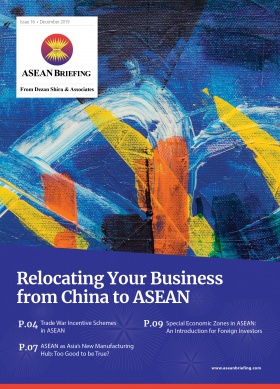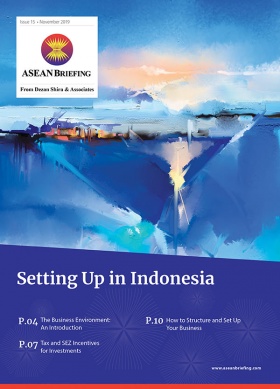Malaysia’s National Automotive Policy 2020: Salient Features
- On February 21, 2020, Malaysia launched the National Automotive Policy 2020 (NAP 2020), which aims to propel the country to become a regional leader in automotive manufacturing.
- The policy is an enhancement of NAP 2014, with an addition of three new key objectives: Next Generation Vehicles (NxGV), Mobility as a Service (Maas), and Industrial Revolution (IR 4.0).
- Under NAP 2020, investors are also offered incentives but must adhere to several criteria.
On February 21, 2020, Malaysia launched the National Automotive Policy 2020 (NAP 2020), which aims to propel the country to become a regional leader in automotive manufacturing.
The policy is an enhancement of the previous policy, NAP 2014, with an addition of three new key objectives namely: Next Generation Vehicles (NxGV), Mobility as a Service (MaaS), and Industrial Revolution (IR 4.0) The government expects NAP 2020 to contribute 104 billion ringgit (US$24 billion) to the economy by 2030.
To achieve its objectives, NAP 2020establishes seven new roadmaps and blueprints that serve as guidelines for the main policy. These comprise of strategies covering industry supply chains, human capital, infrastructure readiness, and engineering and technology development. The roadmaps and blueprints will be regularly reviewed to remain abreast of disruptive technologies and trends.The objectives of NAP 2020
The specific objectives of NAP 2020 are as follows:
- Turn Malaysia into a regional hub for NxGV technology systems and vehicles production;
- Expand the domestic industry in the sector of MaaS particularly for the development of an integrated transport ecosystem;
- Ensure the advancement of the domestic automotive industry is in line with the developments of IR 4.0;
- Reduce carbon emission in-line with the ASEAN Fuel Economy Roadmap of 5.3 Lge/100km by 2025; and
- Ensure the country benefits from the spin-off economy from the overall implementation of NxGV.
NxGV
NxGV’s are classified as energy-efficient vehicles (EEV) that are equipped with a minimum of Level 3 vehicle automation. NxGV technology is classified according to five levels, which goes from driver-enabled vehicles to fully driverless.
Level 3 is conditional automation, which means the vehicles are capable of driving themselves but only under strict and ideal conditions, and a human driver is still required to be behind the wheel. If these conditions are not met, the human driver must take over. The government is aiming for market penetration of NxGVs by 2025.
MaaS
MaaS is a concept that integrates various types of services and transport modes into one centralized service through a digital platform. This includes ride-sharing apps, as well as delivery services and online healthcare services.
Through MaaS, the government hopes this industry will impact new ownership models and form a critical part of the future of transportation in the country.
IR 4.0
IR 4.0 refers to developing and applying technologies in the field of artificial intelligence (AI), big data analysis, and internet of things (IoT) to enable the implementation of the NxGV and Maas industries.
Through this scheme, Malaysia’s automotive industry will develop vehicle-to-vehicle communications technology, cameras, and new sensors that are equipped with advanced algorithms to monitor the road, vehicle, and weather conditions.The NAP 2020 framework
As mentioned above, the NAP 2020 framework is an enhancement of the NAP 2014 framework with the addition of the NxGV, MaaS, and IR 4.0 objectives.
The NAP 2014 framework consisted of:
Three directional thrusts:
- Investments;
- Technology and engineering; and
- Market expansion.
And three strategies:
- Human capital development;
- Value chain development; and
- Safety, environment, and consumerism.
Customized incentives
The government will prepare customized incentives in a prevailing regulation to encourage investments into NAP 2020. There are, however, several vast criteria, investors will have to adhere to:
- Value of investment;
- Total production;
- Research and development activities;
- Critical component manufacturing;
- Fuel consumption;
- Vehicle carbon emissions;
- Value-added activities;
- Employment opportunities;
- Engineering index;
- Total exports;
- Supply chain development; or
- Technology transfer.
The government will also support market expansion through export promotion programs, soft loan schemes, free trade agreements (FTA), and e-commerce platforms, among others. Additionally, the government will issue specific NxGV manufacturing licenses.
Fierce competition from ASEAN member states
Malaysia faces fierce competition from other ASEAN member states in its mission to become a leader in automotive manufacturing and engineering.
The country produced some 604,000 units in 2019with the majority sold in the domestic market. This is still dwarfed by the region’s leading car exporters in Thailand and Indonesia who export more than 1 million and 350,000 vehicles, respectively.
NAP 2020 does bring promise as it aims to develop an automotive ecosystem that is in tandem with the new technological frontiers currently at the forefront of mobility in ASEAN, thus, providing a unique opportunity for investors looking to grow their footprint in this region.
About Us
ASEAN Briefing is produced by Dezan Shira & Associates. The firm assists foreign investors throughout Asia and maintains offices throughout ASEAN, including in Singapore, Hanoi, Ho Chi Minh City and Jakarta. Please contact us at asia@dezshira.com or visit our website at www.dezshira.com
- Previous Article Indonesia’s Palapa Ring: Bringing Connectivity to the Archipelago
- Next Article Microsoft Eager to Build Data Centers in Indonesia







